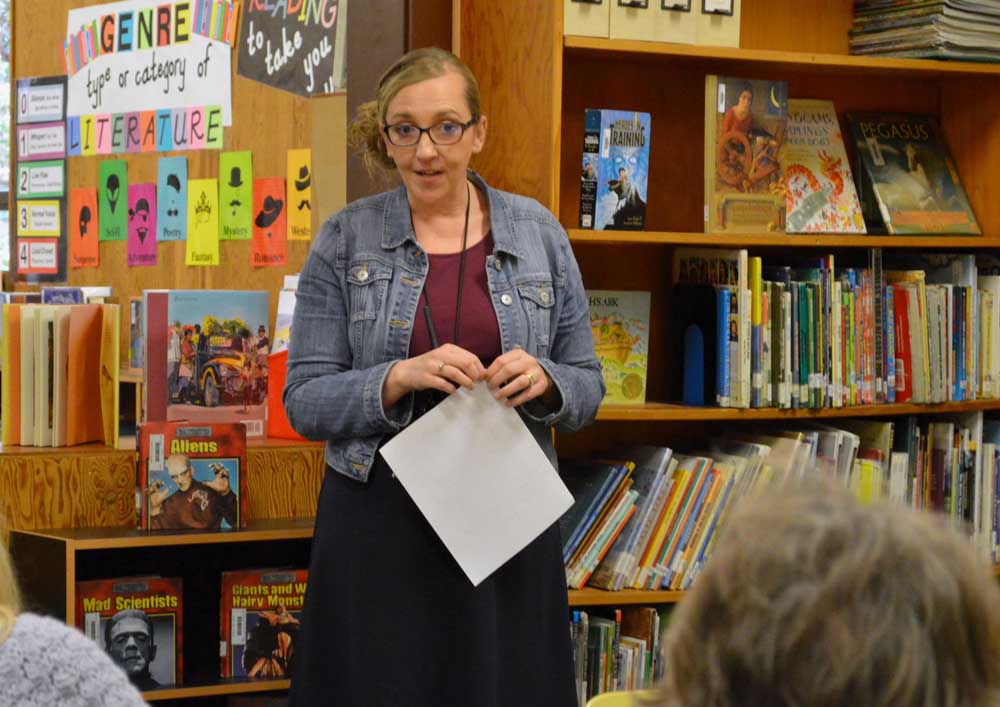Mission Control launches in Seaside
Published 10:28 am Tuesday, June 19, 2018

- Gearhart Elementary School Principal Juli Wozniak speaks to members of the State Advisory Council for Special Education about Mission Control.
Schools are tasked with teaching reading, writing and arithmetic, but it’s hard for kids to get the lessons when they are upset and misbehaving.
That’s why Seaside School District launched an innovative approach to behavioral health in the 2017-18 school year. Mission Control is a calming room where kids can focus on self-regulating their emotions and behavior.
The payoff is better-behaved, happier kids, principals say.
Prior to this year, “There was a real lack of social-emotional education that kids need to know in order to function,” says Rachel Whisler, a behavior support specialist at Seaside Heights Elementary School.
“Behavior is a way of communicating that affects friendships, learning and success in a lot of ways” she says. Kids may wonder: “Why am I out of control?” “Why do I say things like that to my friends?” “Why am I so impulsive?”
Beginning in kindergarten students are taught about brain function and how to identify and control their emotions and behavior, using the Zones of regulation.”
After learning how their brain works, they are better equipped to regulate themselves through calm breathing or holding something in their hand or saying they need some space and taking a walk.
“Those are opportunities kids never had before entering on this journey as a school district,” Whisler says.
Seaside principals and other educators visited Butternut Creek Elementary School’s Wellness Room in the Hillsboro School District and were sold on the idea of creating a similar room at Gearhart Elementary and Seaside Heights. Then the work began.
Finding space required relocating computer and performance spaces, ordering supplies and setting up Mission Control. Rooms at each school feature strings of mini-lights, calming stations with sand, theraputty, manipulative items, larger motor challenges and enclosed spaces like a tepee.
In addition to the Mission Control room, regular classrooms have new flexible seating, including yoga balls, standing tables and cushions, so students can learn where they were most comfortable.
“Children do well when they have the skills,” says Gearhart Principal Juli Wozniak. “We all want to do well.” The goal is to provide kids with skills they need.
Identifying emotions begins with looking at facial expressions. Kindergartners and Head Start teachers use the Pocket Full of Feelings curriculum to teach kids about feelings.
“When we first started, if you asked a 7-year-old what they were feeling, they would say: ‘sad’ ‘mad’ or nothing,” says Whisler. “Now they can say, ‘I’m disappointed,’ ‘jealous,’ ‘betrayed.’”
She says kids learn that all feelings are OK. What matters is what they do with them and how they act. They can identify their feelings and not let emotions run the show.
For two years Seaside educators have studied trauma-informed practices that take into account adverse childhood experiences. It involves treating people with compassion and understanding around traumas they may have experienced.
“We are building a web of support throughout the school that can help students when they are not able to cope by themselves,” says Whisler.
All staff members and students are trained and familiarized with Mission Control. It is open to everyone and is not used for punishment or reward. It is a place where students can self-regulate their behavior.
For the first couple months of the school year, children stayed in their regular classrooms.
Most classrooms have a peace corner that students can access to self-regulate, says Seaside Heights Principal John McAndrews. It is part of the classroom but is a place where the student can use sensory items or cushions to feel more comfortable.
“This allows students to not feel so isolated,” McAndrews says. “They are free to rejoin whenever they want to come back to class.”
Teachers and counselors recommend children for Mission Control. Kids may also request a travel agent or navigator to take them to Mission Control.
Students check in one at a time to Mission Control. They need to follow directions, choose one station and stay there for their allotted time. From leaving the classroom to returning to class is 15 minutes.
Mission Control remains silent. Kids do not talk or interact with each other. When it is time to check out, the monitor makes sure the kids can follow instructions, such as “touch your nose” or “wave your arms.” Then they quietly exit.
Now, the goal is to extend the zones of regulation to parents, pediatricians and families.
“We want to improve on creating a common language between school and home,” McAndrews says.
There has been a significant drop in office referrals for behavioral problems since implementation of Mission Control, both principals say. Teachers report students are self-regulating better in the classrooms.
McAndrews says absenteeism is lower and many students are reaching year-end benchmark goals mid-year.
“This is a game changer,” says Seaside School District Superintendent Sheila Roley.
“Both principals are absolute rock stars,” she says of Wozniak and McAndrews. “We have a great leadership team. (Special Services Director) Jeremy Catt is a visionary.”
“Now, our school district can give the tools of reading, writing and math, and also what to do when those things frustrate you,” Whisler says. “Instead of blowing out or shutting down or stopping listening, kids have tools to keep going, which builds resiliency.”
• Blue Zone: slow, tired, sick, bored
• Green Zone: “good to go,” happy, calm, focused
• Yellow Zone: “slow down, use caution” frustrated, overwhelmed, silly, wiggly, excited, worried, anxious
• Red Zone: “stop,” extreme emotions, uncontrolled anger, aggression, terror, elation



